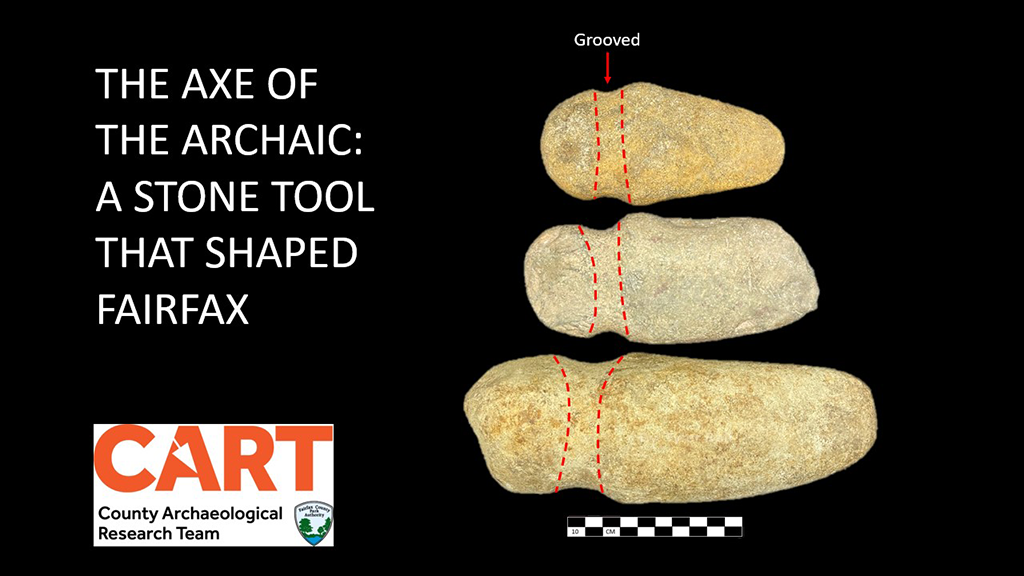By Tyler Ball, M.A.

The artifacts featured for March are three different sizes of full grooved stone axes that are from a collection donated to the Archaeology and Collections Branch. Full grooved stone axes are believed to have first been introduced during the Early Archaic period, about 9,000 to 8,000 years before present (BP). Grooved stone axes were used for a variety of things but most commonly for chopping, carving, and splitting wood. These axes and many other tool types that people made thousands of years ago are found at archaeological sites throughout Fairfax County.
People during the Archaic period shifted from being hunters who traveled and constantly moved around to people who began to make camps and establish more permanent settlements. The reason for this is the decline of the frozen tundra environment and the growth of trees and other vegetation. To thrive in this new environment, the first people of Virginia needed to develop a larger tool kit for chopping, carving, and splitting wood. People began to craft full grooved stone axes during this period. As time went on and needs changed, people made and used different stone tools. Archaeologists can place the different types of axes and tools within time periods based on how the tools were created.
Unlike other stone tools that are produced using the process of flintknapping (flaking and chipping away stones into arrowheads, spears, drills, etc.) ground tools are more commonly crafted by grinding and pecking a soft stone such as granite or greenstone. To make a ground stone tool, the person crafting the new tool needed to use a harder stone to grind, peck, and shape the tool’s softer surface. This harder stone is known as a hammer stone. Hammer stones are also found at archaeological sites in Fairfax County.
These grooved axes are called “full” because of the worked ring is completely wrapped around the tool’s head. Once the edges of the axe were shaped and the groove was crafted, the axe was then hafted or attached to a split wooden handle and fastened tightly with animal sinew or tendon. The sinew was typically gathered from larger wild game, such as deer, bison, etc.
Archaeologists continue to study grooved stone axes so we all can learn more about the people who lived in Fairfax County long ago.

